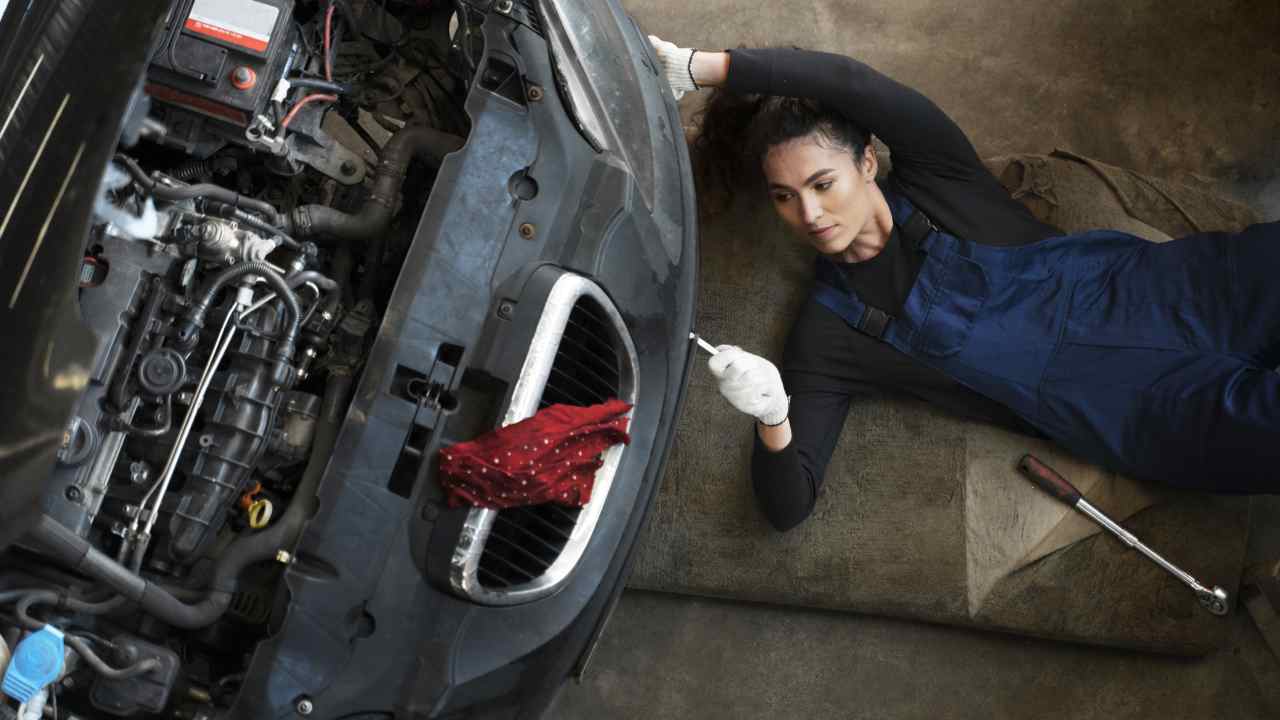For many, a car is more than just a means of transportation—it’s a personal sanctuary, a trusty companion on adventures, and a significant investment. Regular car maintenance is crucial to ensure your vehicle stays in top condition, maximizing its lifespan and performance. But don’t worry if you’re not an auto expert yet. This blog will guide you through the basics of DIY car maintenance, offering tips and tricks that even beginners can follow. Whether you’re a seasoned DIY enthusiast or a car owner looking to save money, there’s something for everyone.
Why DIY Car Maintenance Matters
Benefits of Taking Care of Your Car Yourself
Taking the DIY approach to car maintenance can be incredibly rewarding. Not only do you gain a better understanding of how your vehicle works, but you also establish a deeper connection with it. By handling simple maintenance tasks, you become more confident in your ability to troubleshoot and address issues when they arise. Plus, nothing beats the satisfaction of a job well done!
Cost Savings and Empowerment for Car Owners
One of the most significant advantages of DIY car maintenance is the potential for cost savings. Professional services can add up quickly, especially for routine tasks you can easily do at home. By investing in basic tools and learning essential maintenance skills, you can save money over time. Additionally, knowing how to take care of your car empowers you to make informed decisions about repairs and helps you avoid unnecessary expenses.
Importance of Safety and Regular Inspections
Safety should always be a top priority for car owners. By performing regular maintenance, you reduce the risk of unexpected breakdowns and ensure your vehicle is safe to drive. Routine inspections also allow you to identify potential issues before they become major problems. A well-maintained car is not only safer but also more reliable and fuel-efficient.
Essential Tools for DIY Maintenance
Basic Tools Every Car Owner Should Have
Before you start your DIY car maintenance journey, you’ll need a few essential tools. Start with a set of screwdrivers, wrenches, and pliers. These basic tools will help you tackle a variety of tasks, from tightening loose bolts to removing and replacing components. Adding a socket set to your collection will make handling nuts and bolts even easier.
How to Use These Tools
Understanding how to use your tools is crucial for successful car maintenance. Screwdrivers come in different sizes and types, such as flathead and Phillips, and are used for turning screws. Wrenches and pliers are essential for gripping and turning nuts and bolts, while a socket set allows you to tighten or loosen fasteners quickly. With practice, you’ll become more comfortable using these tools and gain the skills needed to perform basic maintenance tasks.
Organizing Your Tools for Easy Access
Keeping your tools organized ensures you can find what you need when you need it. Invest in a toolbox or tool chest to store your equipment neatly. Arrange your tools by type and size, and label each compartment for easy identification. Regularly clean and maintain your tools to ensure they stay in good condition and are ready for use at a moment’s notice.
Basic Car Maintenance Tips and Tricks
Changing the Oil and Oil Filter
Regular oil changes are essential for keeping your engine running smoothly. To change the oil, start by warming up the engine and turning it off. Place a drain pan under the oil pan, remove the drain plug, and allow the old oil to drain. Replace the drain plug and remove the old oil filter using an oil filter wrench. Install a new filter and fill the engine with fresh oil, checking the dipstick for the correct level.
Checking and Maintaining Proper Tire Pressure
Tire pressure affects your car’s handling, fuel efficiency, and safety. Check the pressure regularly using a tire pressure gauge, and compare it to the recommended levels in your owner’s manual. If needed, add or release air to achieve the proper pressure. Don’t forget to check the pressure of your spare tire, as well.
Replacing Air Filters and Spark Plugs
Air filters prevent dust and debris from entering the engine, while spark plugs ignite the air-fuel mixture. Both components should be replaced periodically to ensure optimal performance. To replace an air filter, locate the air filter box, remove the cover, and swap the old filter for a new one. For spark plugs, disconnect the spark plug wires, remove the old plugs using a spark plug socket, and install new ones, tightening them securely.
Inspecting and Topping Up Fluids
Regularly inspect and top up essential fluids, including coolant, brake fluid, and transmission fluid. Check the levels using the appropriate dipsticks or reservoirs, and add fluid as needed. Be sure to use the recommended fluid types specified in your owner’s manual to avoid damaging your vehicle.
Common Car Problems and DIY Solutions
Understanding Warning Signs
Familiarizing yourself with common warning signs can help you address issues before they escalate. Listen for unusual noises, such as squealing brakes or knocking sounds from the engine. Pay attention to warning lights on your dashboard, which may indicate problems with your car’s systems. If you notice any of these signs, investigate further and take action as needed.
Step-by-Step Guide for Common Issues
Some car problems can be resolved with simple DIY solutions. For battery replacement, start by disconnecting the negative and positive terminals, remove the old battery, and install a new one. When changing wiper blades, lift the wiper arm, release the old blade, and attach a new one. These straightforward tasks can save you time and money compared to visiting a mechanic.
Knowing When to Seek Professional Help
While many car maintenance tasks can be done at home, some issues require professional expertise. If you’re unsure about the severity of a problem or don’t have the necessary tools or knowledge, it’s best to consult a mechanic. They can provide guidance and ensure any complex repairs are completed safely and effectively.
Creating a Car Maintenance Schedule
Importance of a Regular Maintenance Schedule
A regular maintenance schedule helps keep your car in top shape and prevents unexpected breakdowns. By adhering to a routine, you can proactively address potential issues before they become costly problems. A well-maintained vehicle is more reliable, fuel-efficient, and has a longer lifespan.
Tips for Creating a Personalized Schedule
To create a personalized maintenance schedule, start by reviewing your owner’s manual for recommended service intervals. Consider your driving habits and the conditions in which you typically drive. For example, if you frequently drive in harsh weather or on rough terrain, you may need to perform maintenance more often. Use a calendar or app to set reminders for each task, ensuring you stay on track.
Adapting Your Schedule as Needed
It’s essential to adapt your maintenance schedule as your car ages or your driving habits change. Older vehicles may require more frequent attention, while adjustments may be needed for extended road trips or new driving environments. Regularly review your schedule and update it to reflect your car’s needs and your lifestyle.
Take Control of Your Car Maintenance
DIY car maintenance offers numerous benefits, from cost savings to increased confidence in your abilities. By taking the time to learn essential skills and invest in the right tools, you can ensure your vehicle remains in peak condition. With a personalized maintenance schedule and a proactive approach, you’ll enjoy a safer, more reliable ride. We encourage you to take charge of your car’s care and share your experiences with fellow car owners. If you have any questions or feedback, we’d love to hear from you. Happy wrenching!

